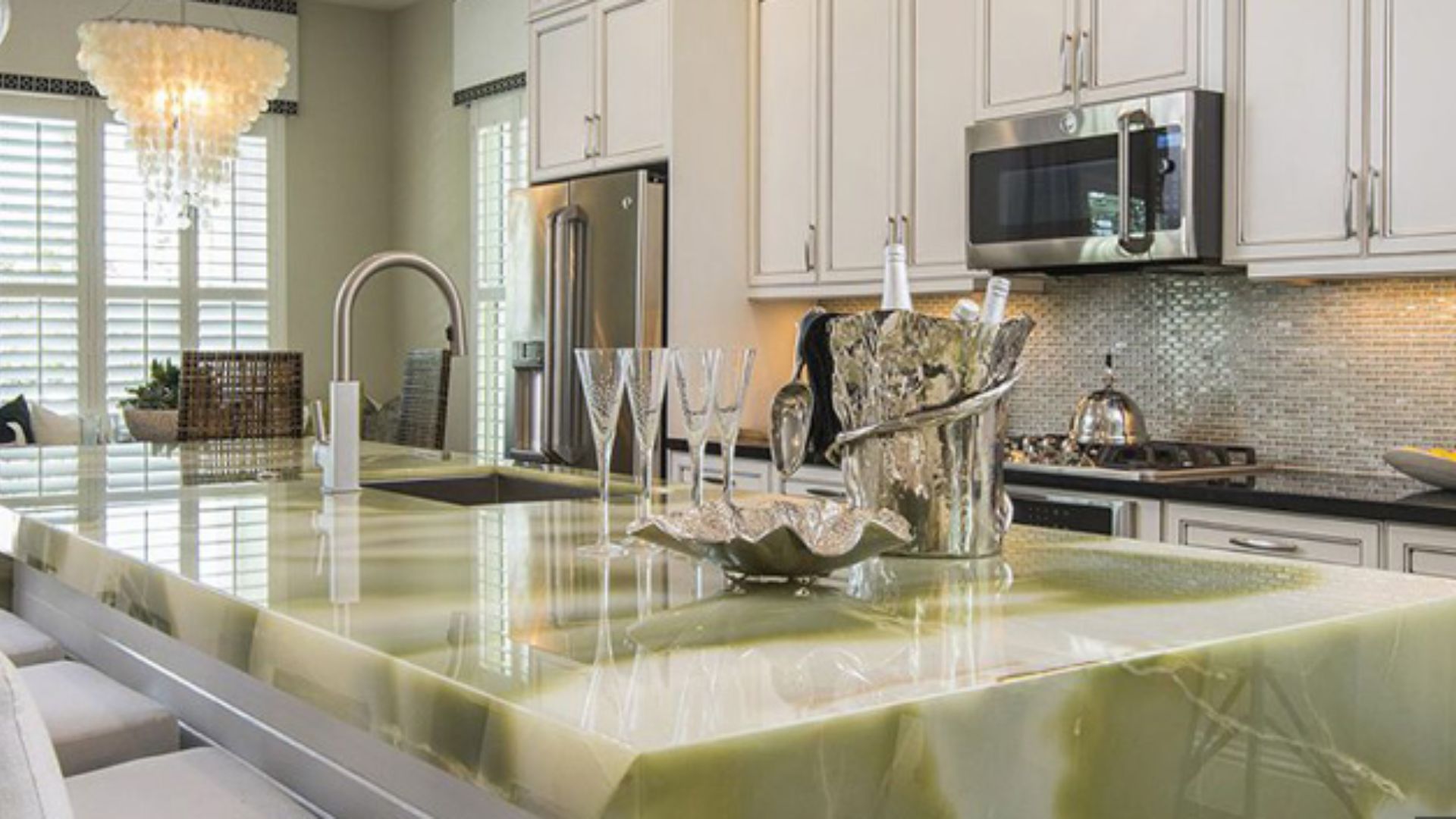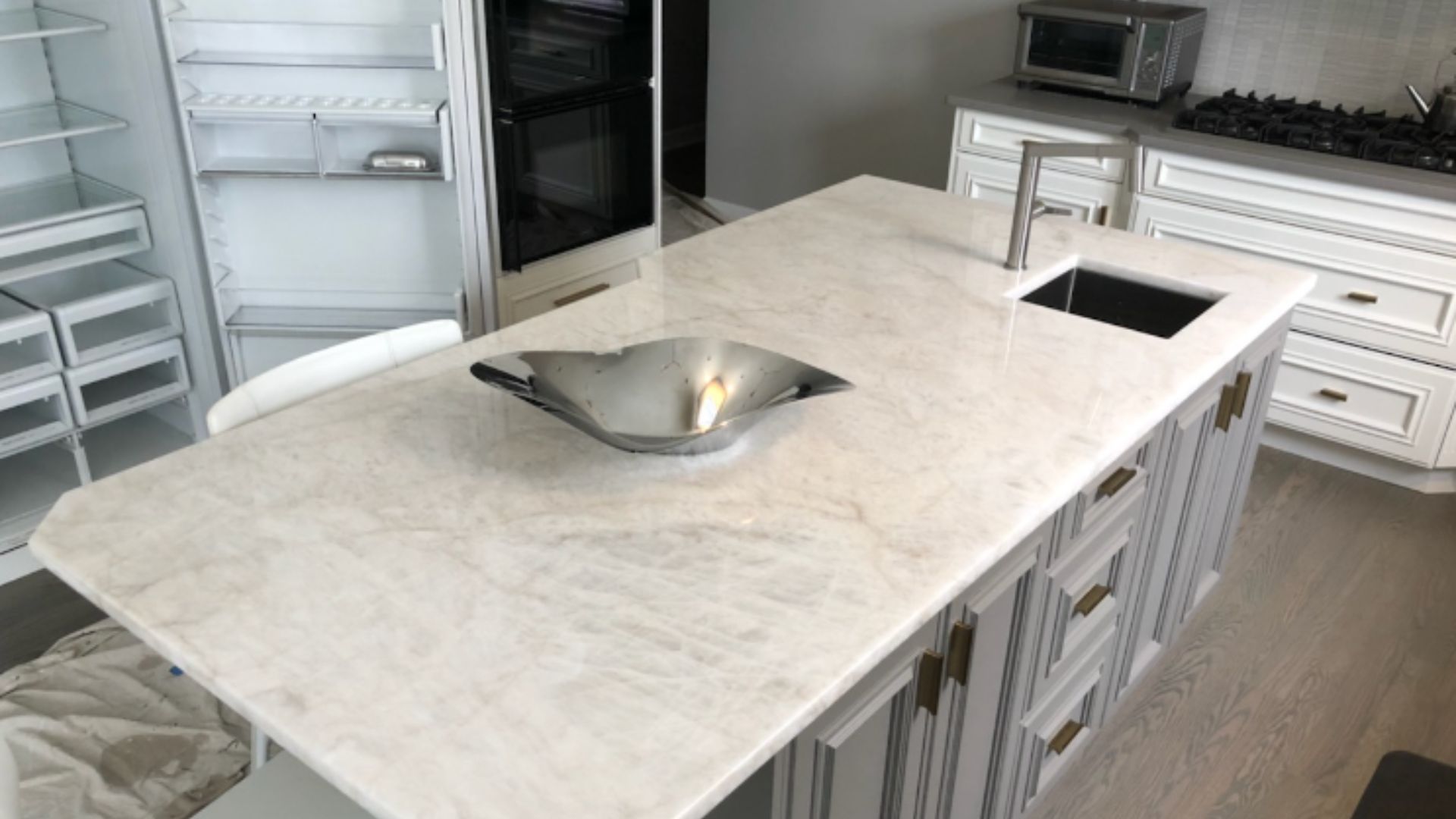Natural stone countertops and furniture add a touch of luxury and timeless elegance to any home. But when it comes to choosing the right material, two popular options often emerge: onyx and marble. Both boast stunning aesthetics, but how do they fare in the crucial battle of durability? This blog post looks into the key differences between onyx vs. marble furniture, helping you make an informed decision for your countertops and furniture.

Understanding Onyx and Marble
Before diving into durability, let’s establish a basic understanding of these captivating materials. Onyx is a translucent gemstone closely related to marble, formed from the deposition of mineral-rich water in rock cavities. Its characteristic veining patterns and captivating translucency make it a truly unique choice.
Marble, on the other hand, is a metamorphic rock formed from limestone or dolomite exposed to extreme heat and pressure. It features a wider variety of colors and veining patterns compared to onyx, offering a more diverse design palette.
Scratch Resistance
Now, let’s get down to the nitty-gritty: durability. When it comes to scratch resistance, onyx takes the crown. Due to its higher Mohs hardness rating (typically between 3 and 7), onyx is significantly more resistant to scratches from everyday wear and tear compared to marble (typically between 3 and 5). Imagine bustling around the kitchen – with onyx countertops, you’ll have peace of mind knowing accidental scrapes from cutlery or cookware are less likely to leave permanent marks.
However, it’s important to remember that both materials benefit from using cutting boards and coasters to minimize the risk of scratches.
Heat Resistance
Heat resistance is another crucial factor to consider, especially for countertops. Here, marble presents a slight challenge. Due to its calcium carbonate composition, marble is susceptible to etching and staining from hot pots and pans. While proper sealing can mitigate this issue to some extent, marble countertops require a bit more care and attention to prevent heat damage.
Onyx, on the other hand, exhibits greater heat resistance compared to marble. While extreme heat is still not recommended, onyx can withstand moderate heat exposure without sustaining permanent damage. This makes it a more practical choice for busy kitchens where hot dishes are a frequent occurrence.
Spills Happen, But How Do They Fare?
Kitchens and dining areas are prone to spills, so stain resistance is a vital consideration. Marble, with its inherent porosity, readily absorbs liquids, making it susceptible to staining if not sealed properly. Spills like wine or coffee can leave permanent marks if not addressed promptly.
Onyx, fortunately, boasts a lower porosity compared to marble. This translates to greater stain resistance, making it a more forgiving material for countertops and furniture. Spills are less likely to penetrate the surface, allowing for easier cleanup and minimizing the risk of permanent staining.
Maintenance Matters
Both gemstone and marble require some level of maintenance to maintain their beauty. Marble, with its higher porosity, necessitates regular sealing to prevent staining. This typically involves applying a sealant every few months, depending on usage and the type of sealant used.
Onyx, while naturally more stain-resistant, can still benefit from periodic sealing to enhance its longevity and luster. However, the sealing frequency is typically less compared to marble. In terms of daily cleaning, both materials can be maintained with a mild soap and water solution, followed by thorough drying to prevent watermarks.
Choosing the Champion for Your Needs
So, which stone reigns supreme in the realm of durability? The answer depends on your specific needs and priorities. If exceptional scratch and heat resistance, along with lower stain susceptibility, are paramount, then onyx emerges as the clear champion. Onyx countertops and furniture are ideal for busy households and those who desire a low-maintenance option.
However, if you’re captivated by the wider color and veining variety of marble, and are willing to invest a bit more time in maintenance, then marble can still be a viable choice. Ultimately, the best material for you hinges on your lifestyle, aesthetic preferences, and desired level of maintenance.
Conclusion
Both onyx vs marble offer unique advantages and disadvantages. By understanding their compositional differences and how they fare in terms of scratch resistance, heat resistance, stain resistance, and maintenance requirements, you can make an informed decision that aligns with your needs and preferences.
Whichever material you choose, remember that natural stone countertops and furniture add a timeless touch of elegance and sophistication to your home. With proper care and maintenance, these stunning stones can grace your space for years to

